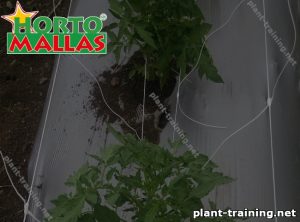Why Plant Training Net?
What is Plant training net? Advantages and Uses
Plant training is an administration training done to control the direction, size, and form of plant growth. It can be referred to as the protection and care given to plants so they can grow effectively.
The aim of any Gardner is to enhance their crop results while hoping that they could decrease the total production expenditures for the cycle, and plants’ training is definitely the perfect help to accomplish both goals, and a good planting training net can help improves yield and reduces costs.
Why must we train plants?
- Enhance the quality and size of plants
- Improves how a plant appears
- Plants become easier to manage and observe with respect to the model and side of the plant
- Create a structure for the plants that enables the right amount of sunlight for the leaves
- Helps to shelter plants from destruction.
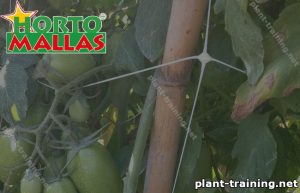
How to train plants
There are diverse methods used to train plants, some of which include:
- Stopping: Pinching or stopping is the cutting off of the terminal shoot at the top of the stem. This allows the side buds grow stronger. You can train cucumbers, basil, and tomatoes using this method.
- Support with staking: Staking helps plants to grow straight and also give safety to the wind. Make sure the tie is firm so as to avoid rubbing.
- Thinning: Thinning is the cutting off of some fruit, so as to make sure that the remaining are bigger and of higher quality. This is done to give the plants enough space to grow, receive more water, sunlight and nutrients. This can be done using a tool called thinning shears.
- Pruning: Pruning is the cutting off of some areas in a plant and this is done to increase fruiting or flowering and to make the plant quicker to harvest.
Disbudding: Disbudding the cutting off of side flower buds from a plant. This is conducted on chrysanthemums and carnations to help in the development of long stem. It also gives energy to the remaining plants.
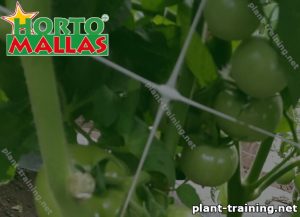
Why Plant Training Net?
Plant nets such as long bean netting are mainly used to back up and support the plants and since supporting plants remain essential on farmland. There are many different systems used to support and grow plants.
Advantages of supporting plants
- Assist them to grow in the space they are needed
- To help hold leaves up in other to increase the level of photosynthesis going on
- To allow even ripening of fruit for instance tomatoes
- Allows insects and bees to pollinate the flowers
- To increase the form of plants so as to make plants easier to manage and look good
- Prevent fruits or flowers from lying on the ground.
- Hail Protection: Protect them from wind and hail storm.
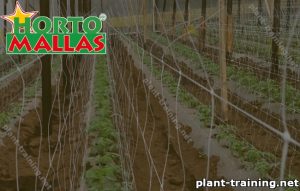
How to protect your plants from Summer hail?
Hail protection is done to protect plants from small hail that can crush or tear delicate plant leaves, which may leave a damage that can be hard for plants to recover from. Here are some things to protect your plants from hail:
- Place buckets, pots, large garbage cans or baskets over plants to protect them from hail. Make sure you weigh them down with heavy objects
- Cover plants which are growing along a building or fence with a wood, fiberglass cardboard, or any flat material. Lean it up against building or fence to supply protection.
- Add more soil around the root of plants to ensure make them upright which and prevent washing away of soil.
- Put some stakes in the soil and make sure it is above on top the highest plant. Cover the full area using a plastic sheet or large tarp. Make sure the corners are covered with heavy objects.
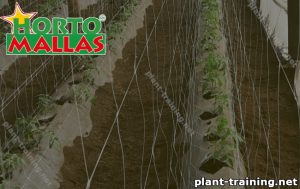
Make sure to take away the coverings after the storm passes to avoid heating the plants or soil.
Before you start using Plant Training Net, here are some things you should put into consideration:
- Make sure you know the need for the plants on your farm. If you have many climbers, then you certainly must select supports that are strong enough for the vines of your climbers. If you are planning to have a climber on your farm, then opting for waterproof netting such as long bean netting may be a great idea.
- If you wish to give your farm an aesthetic lift. Then, you should go for a net that will act a decorative support for the plant.
The important things to take into account are the way awesome your plants are going to be, and exactly how huge you will get them during harvest.
Other Uses of the training net
Training net also helps to increase vertical farm yields even in little spaces by supporting plants and protecting tender vines. It can be used as a defensive measure against rodents, insects, and ground-rot (because it won’t allow the plant to touch the ground).
In vertical farming, plant net makes sure the plants grow upward. It also increases sun exposure, air circulation, and pollination.
Advantages of Plant training net
Plant Netting allows plant specialists to have extra sufficient ground space by making plants to produce vertically. Since it is created with nylon, it strengthens well in an array of climate. Plant net is usually suspended to hang vertically from the roof edge, just like a drape. Alternatively, it can be stretched between two upright metal or wood stakes in the ground, bordering a vertical divider.
To improve crop yields, the use of plant training net is a great way. Its wide openings make harvesting easier. Plant net increases yield by allowing more air exposure and sunlight while decreasing pest damage and ground rot. Net your farm and plants for big profits, improved quality, faster harvest and higher yields.
